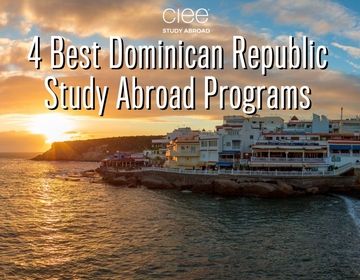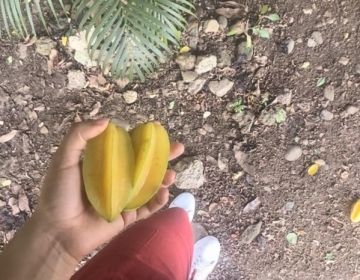Tour de las ballenas en Samaná by Eliana Olivier
Our overnight trip as part of the CIEE Liberal Arts program consisted of a trip to Samaná. We were able to take advantage of the long weekend due to the Dominican independence day on February 27, and we left Santiago on Friday morning and returned Sunday evening. For me, one of the most amazing parts of the trip was the opportunity to see whales in their natural habitat. Every year, humpback whales come to the warm waters of the Dominican coast to mate and give birth. They stay anywhere from January to April or May. The coast of Samaná, a city on the northeastern peninsula of the island, is one of the best places to see the whales when they arrive.
On Saturday morning, our group went to the malecon, or boardwalk, to participate in one of the whale-watching excursions. We boarded a boat along with the other passengers and set off into the ocean. The leaders of the tour were very knowledgeable about humpback whales, and they provided us with a lot of information throughout the first half of the trip. The view of Samaná while leaving the docks was gorgeous, as you could see the entire city and the surrounding mountains.
Once we got a bit further into the ocean, our guide announced that we were approaching some whales. Humpback whales are easy to spot because of their humped backs that rise out of the ocean when they breathe. We were incredibly lucky to see a mother and her baby that morning! The guide told us that mothers give birth in this area, and then stay longer than most other whales in order to raise their baby. In just a few months the calf will grow strong enough to travel 3,000 km north in order to reach their feeding grounds. The calf was the most visible whale, as it would jump out of the water and flip its tail, practicing whale behaviors for the journey ahead. The mother and calf were also accompanied by a male whale. It is common for male humpbacks to accompany mothers in hopes of mating with the female during the following year. It was absolutely incredible to be able to see such huge, intelligent creatures in their natural habitat!
After seeing the whales, the boat continued on to the small island of Cayo Levantado, where we stayed for a few hours to have lunch and enjoy the beach. The water was crystal clear and blue, and it was definitely the most beautiful beach I have ever visited. You could see the mountains in the distance, creating an amazing view from the water.
After spending about four hours on the island, we boarded another boat to head back to Samaná. This was one of my favorite activities in the program, and I’m sure I will remember it for the rest of my life.
Related Posts
Study Abroad Dominican Republic: The Ultimate Guide
Envision this: Colorful streets alive with the sounds of merengue, the aroma of mouthwatering street food wafting through the air, and a warm Caribbean breeze that makes every day feel... keep reading
4 Best Dominican Republic Study Abroad Programs
Imagine waking up to the sound of ocean waves crashing against golden sands, the scent of fresh tropical fruit filling the air, and a day ahead that could include anything... keep reading
Why YOU should come to Santiago? By Ada I. Rios
It’s officially about a month until the semester is over. During my time studying in Santiago, I’ve verified that I prefer the heat to the cold. Sometimes on my way... keep reading







